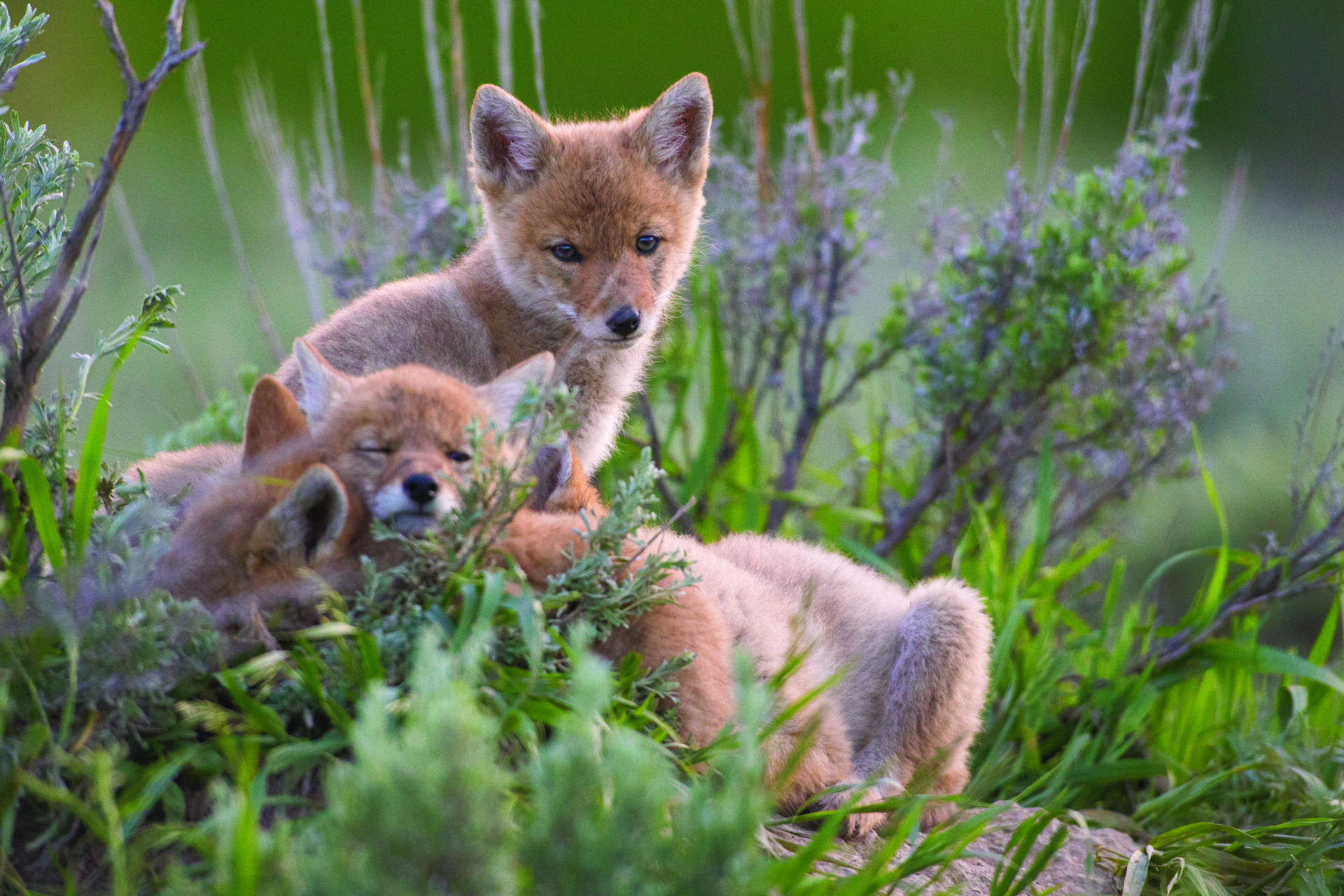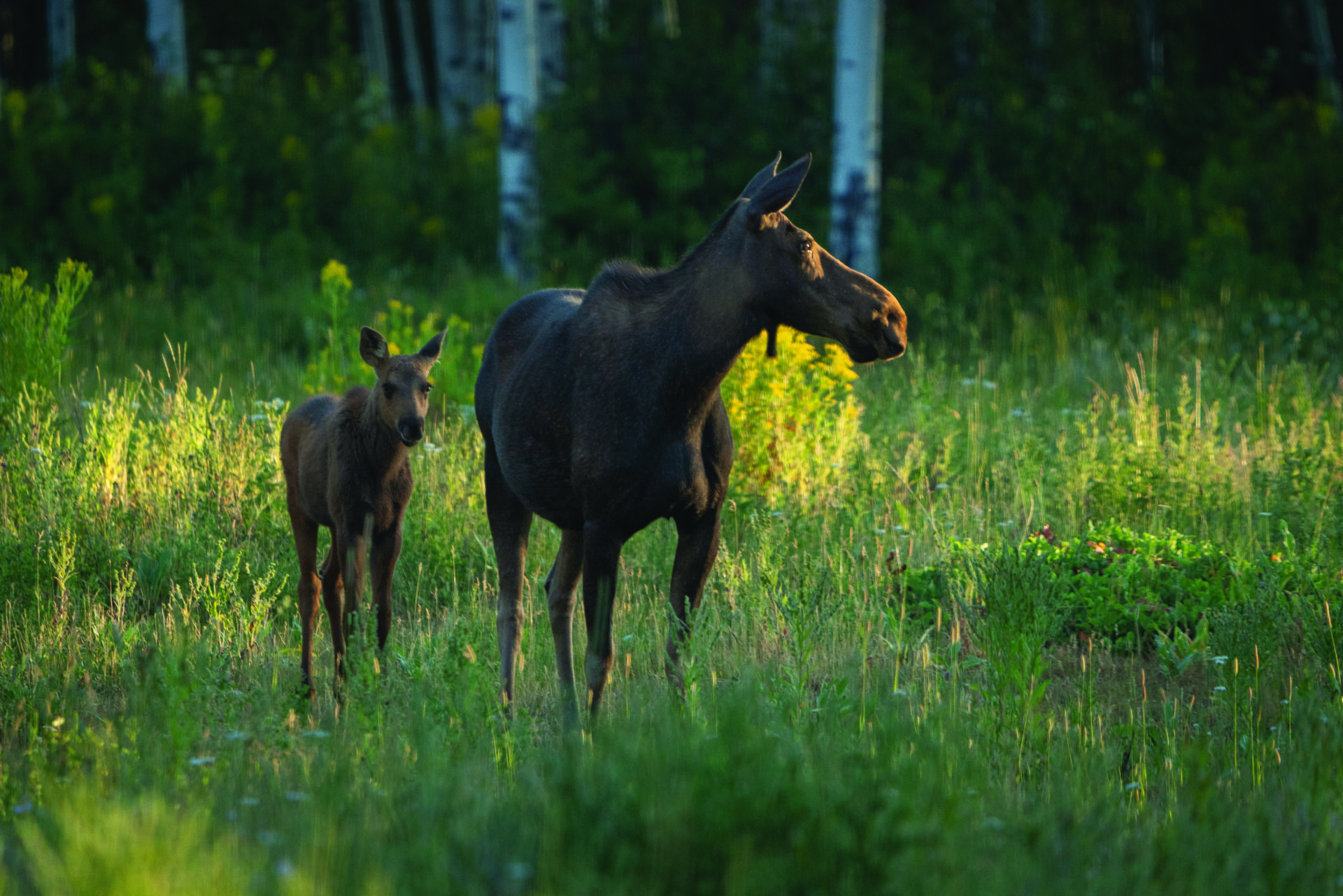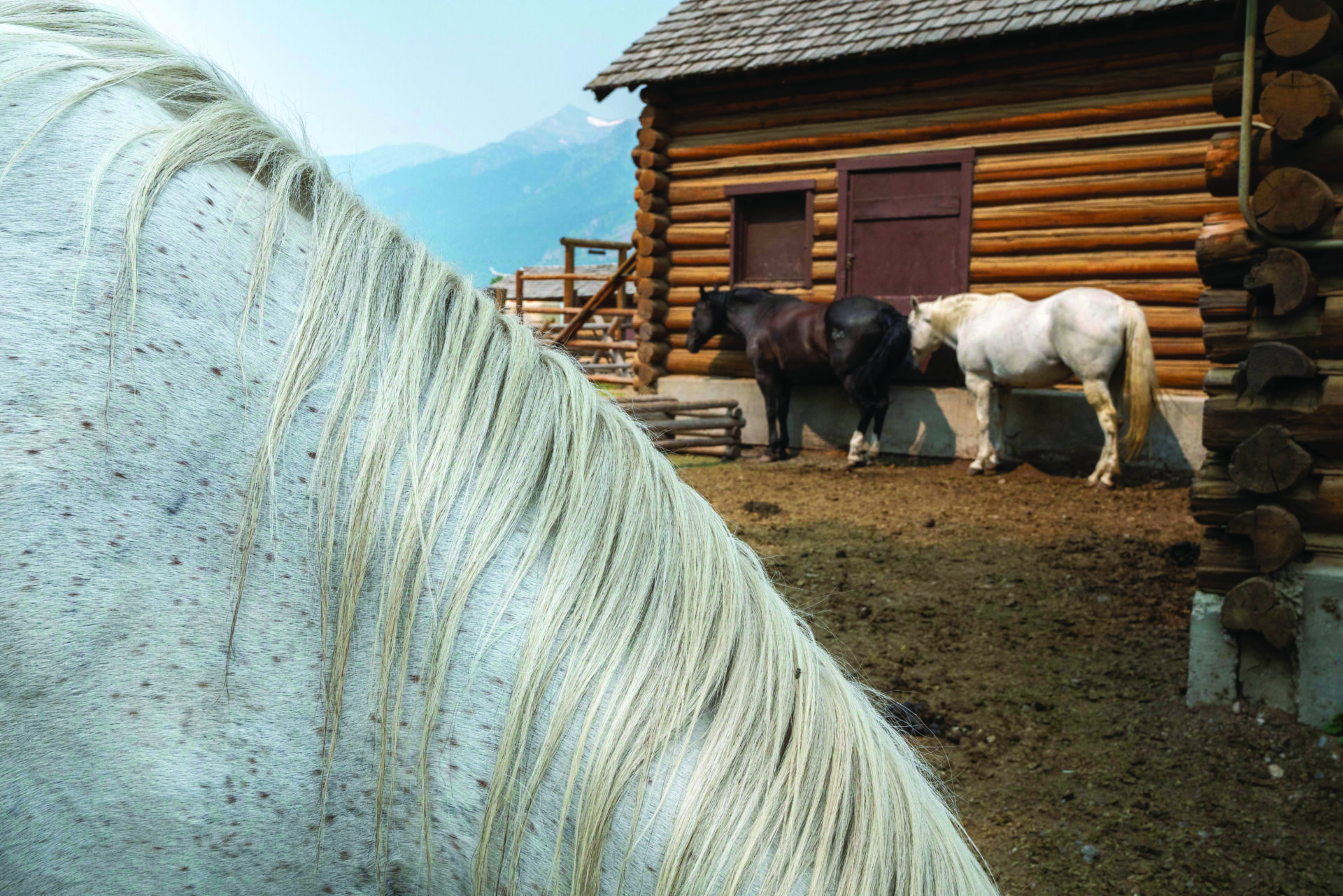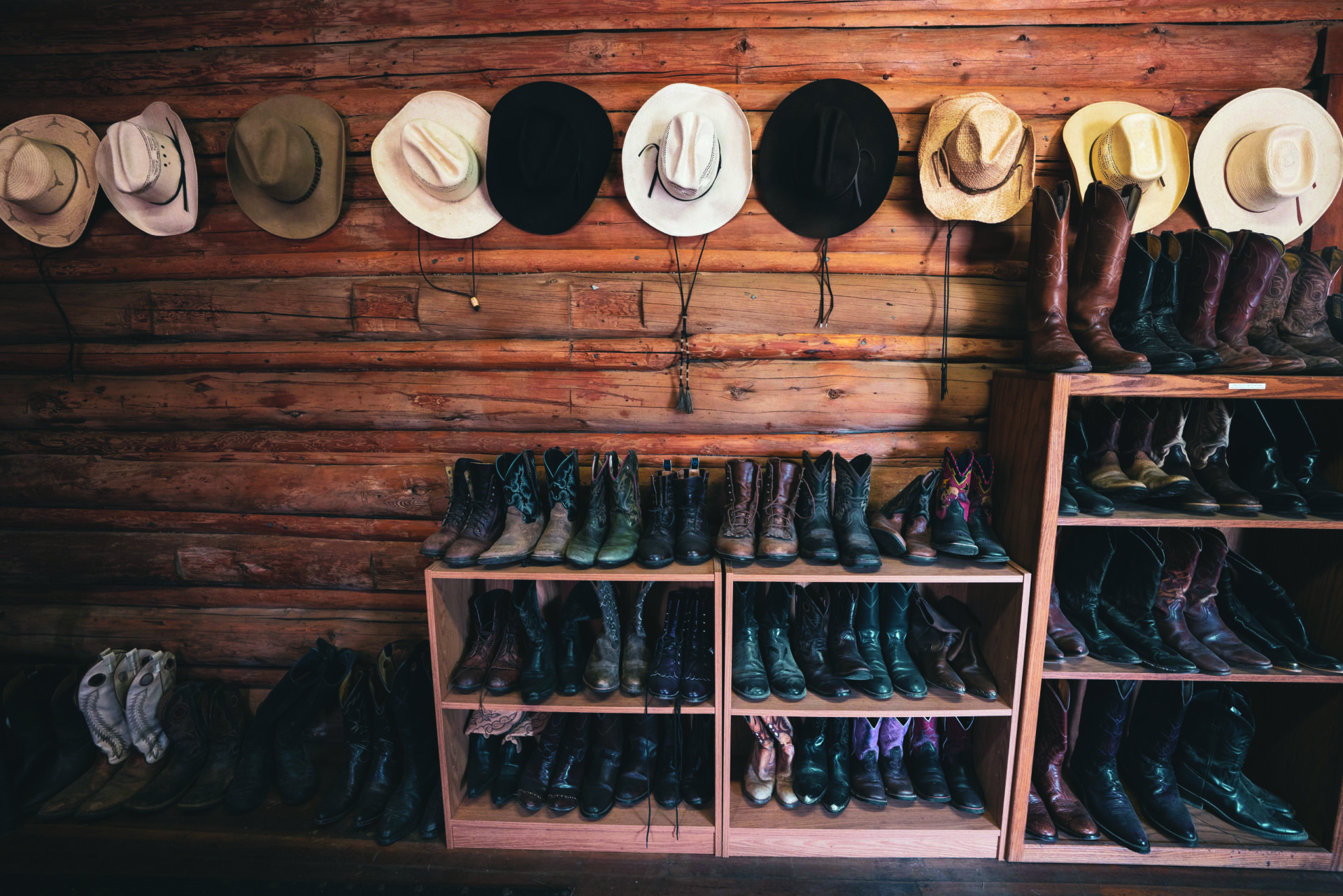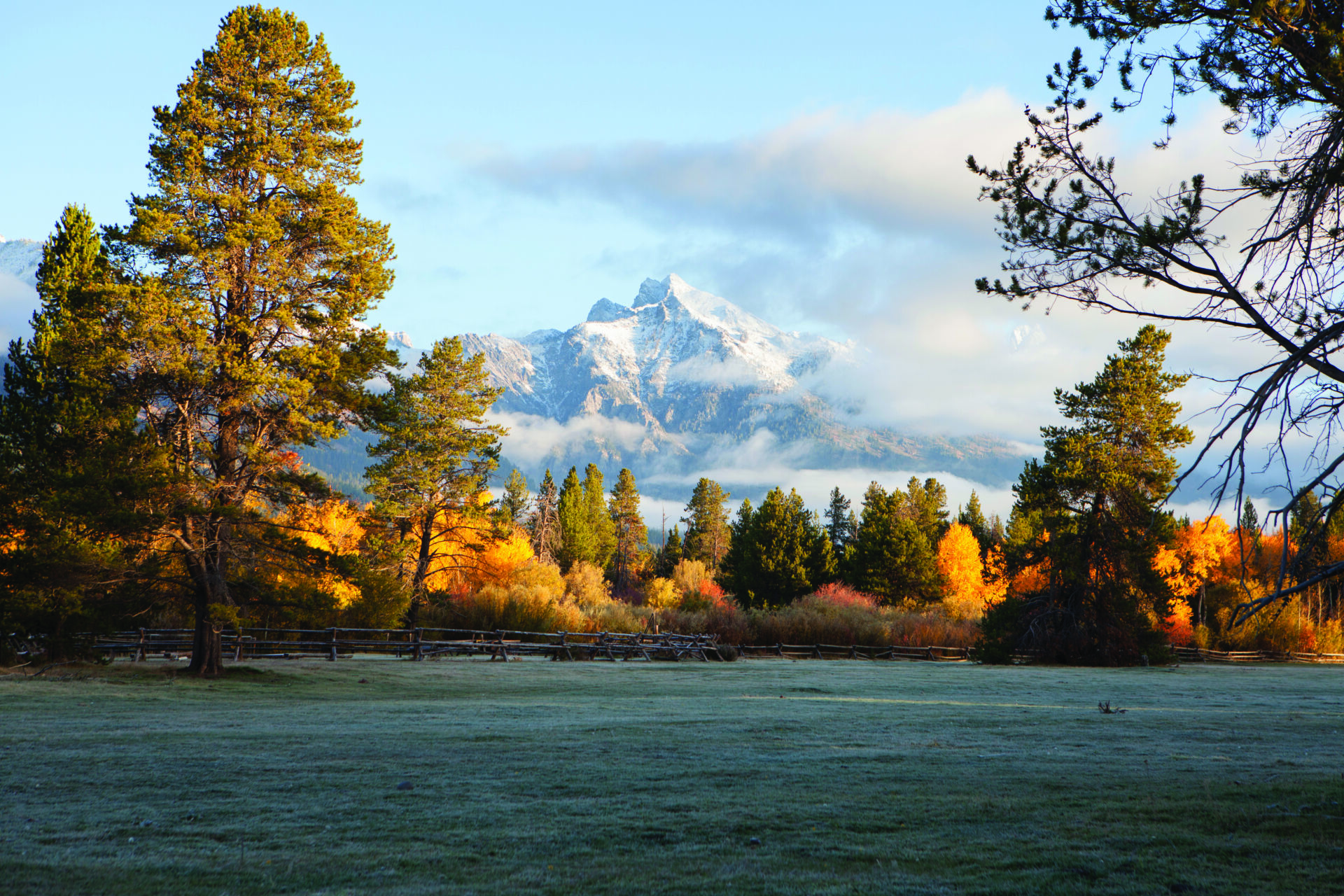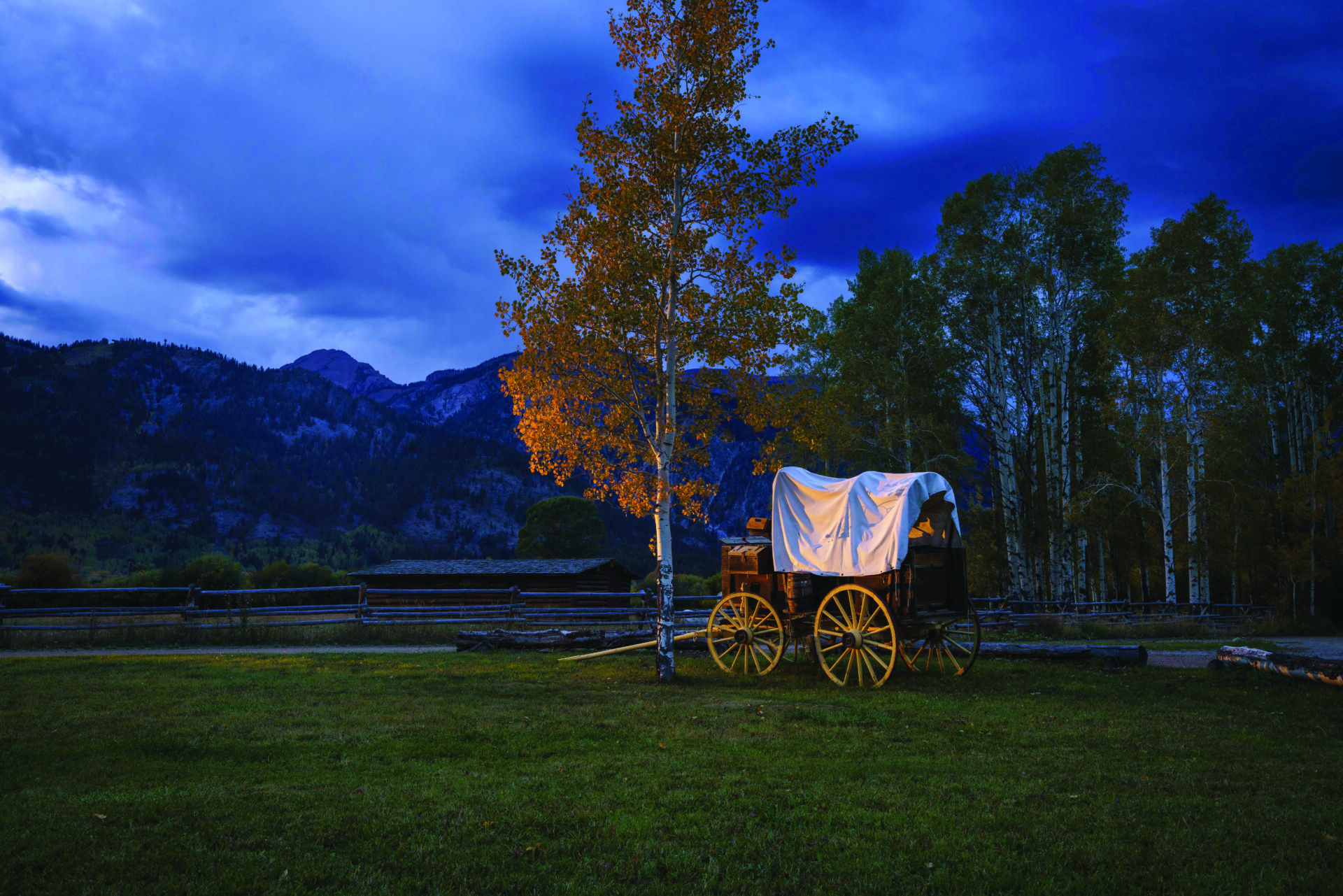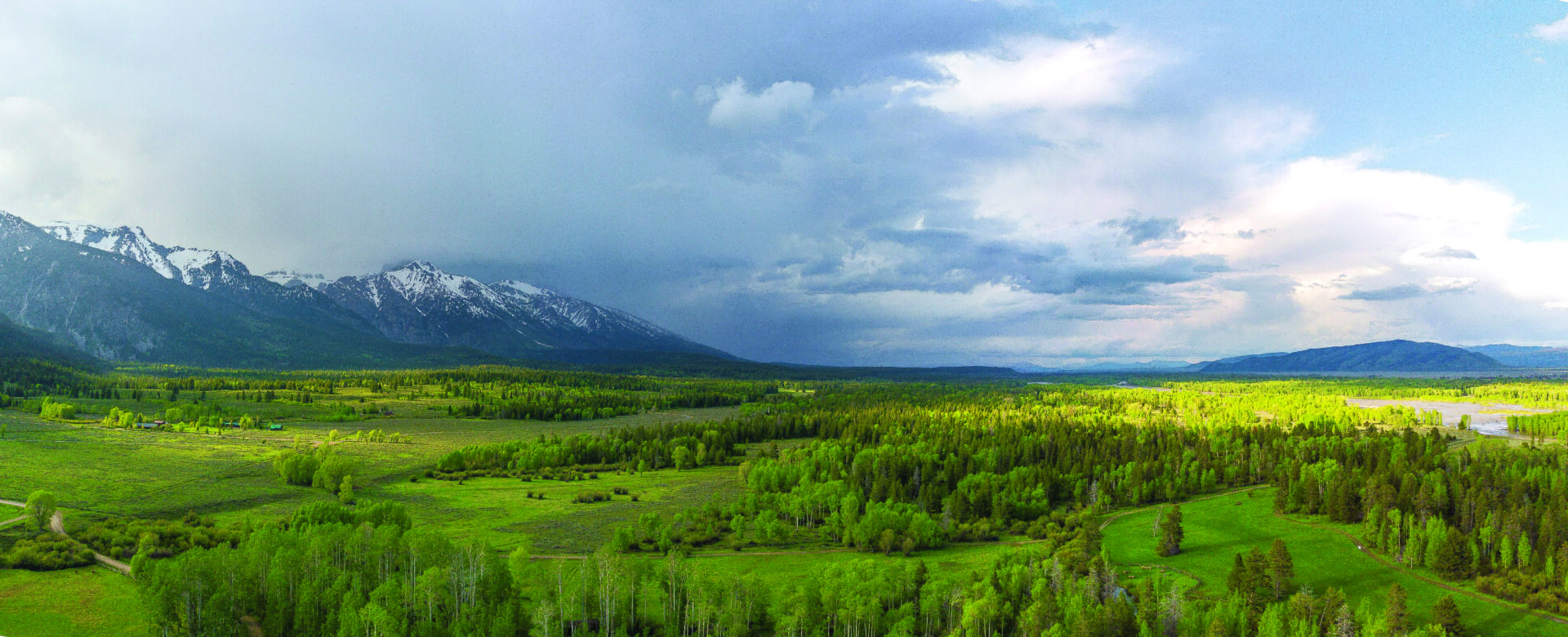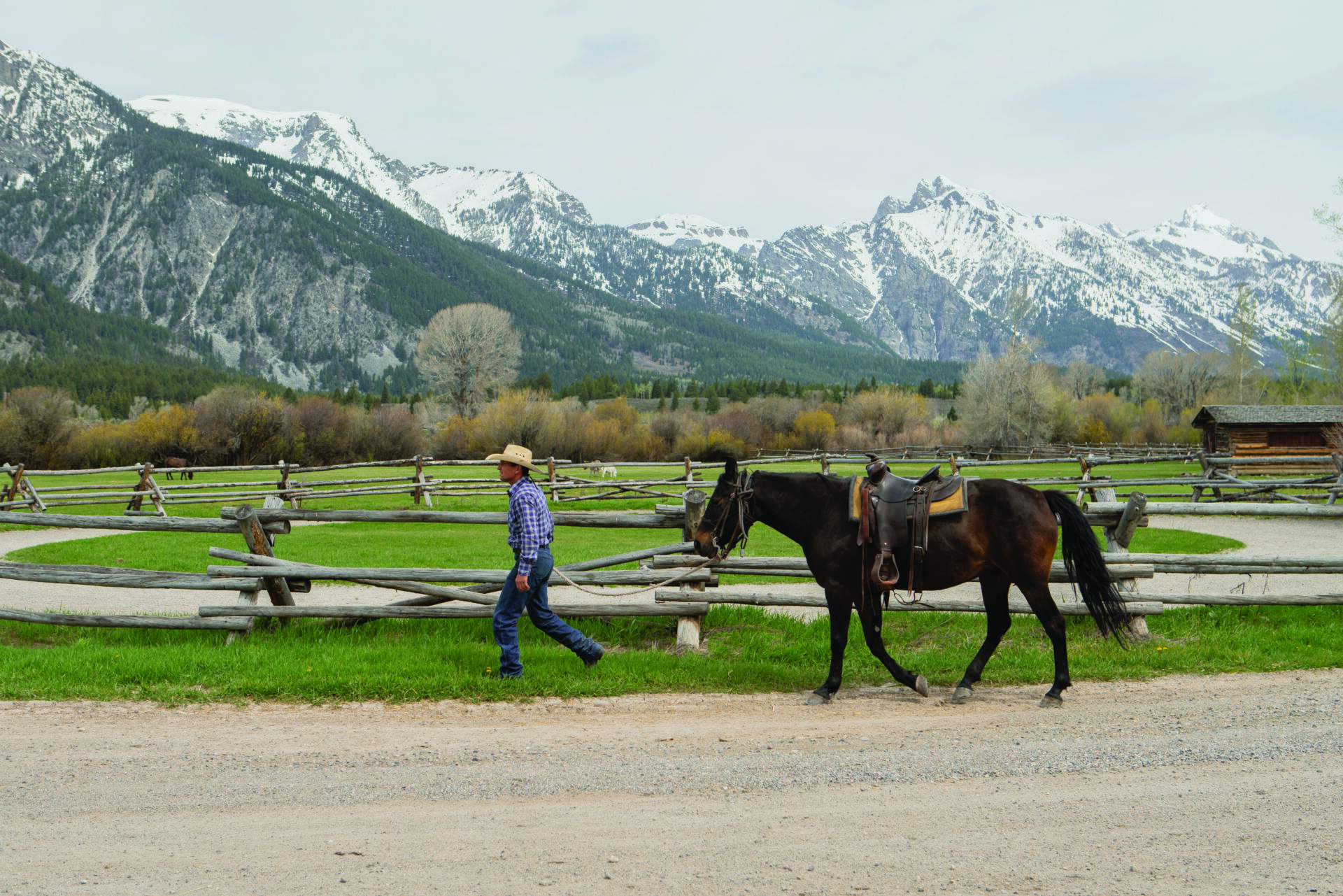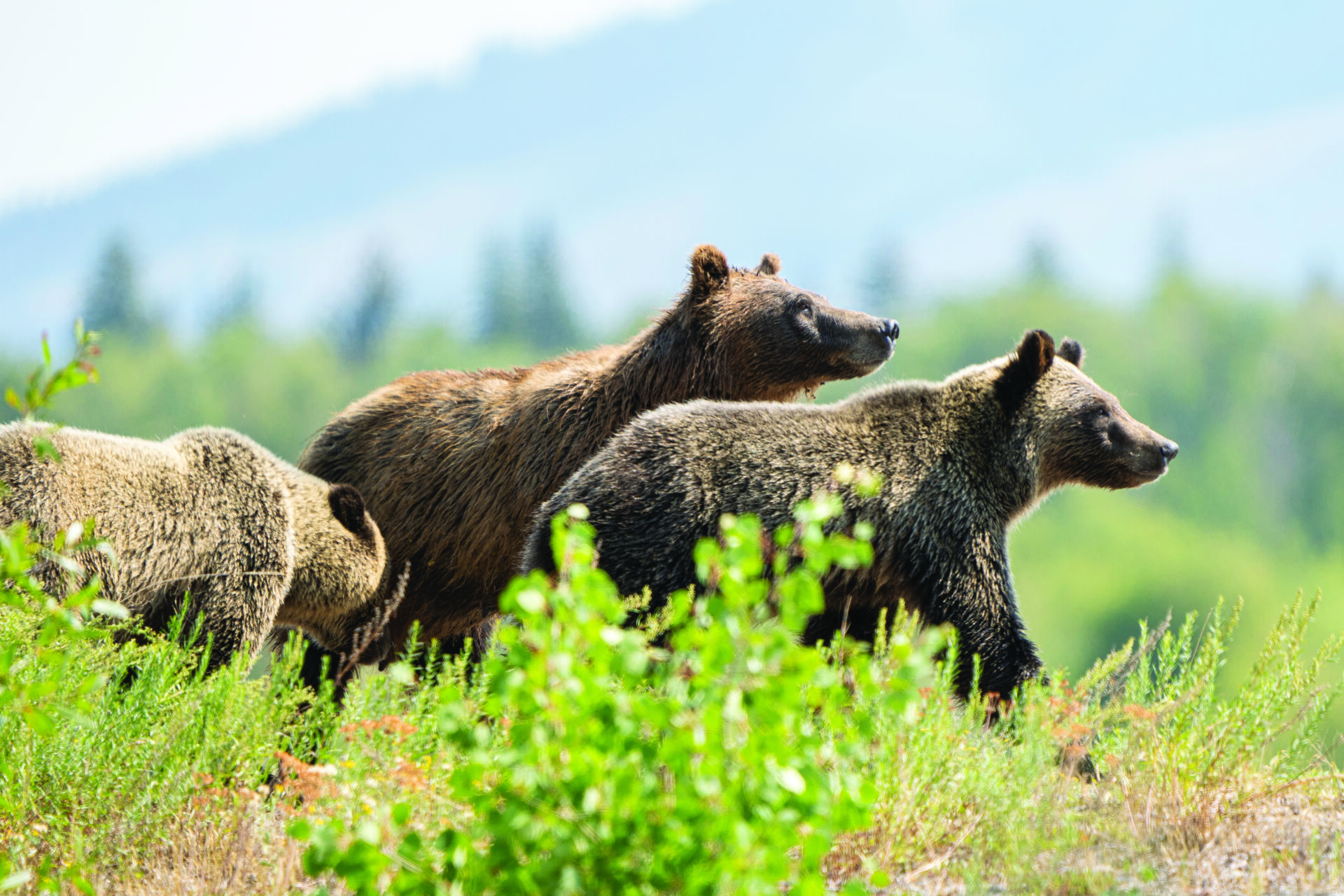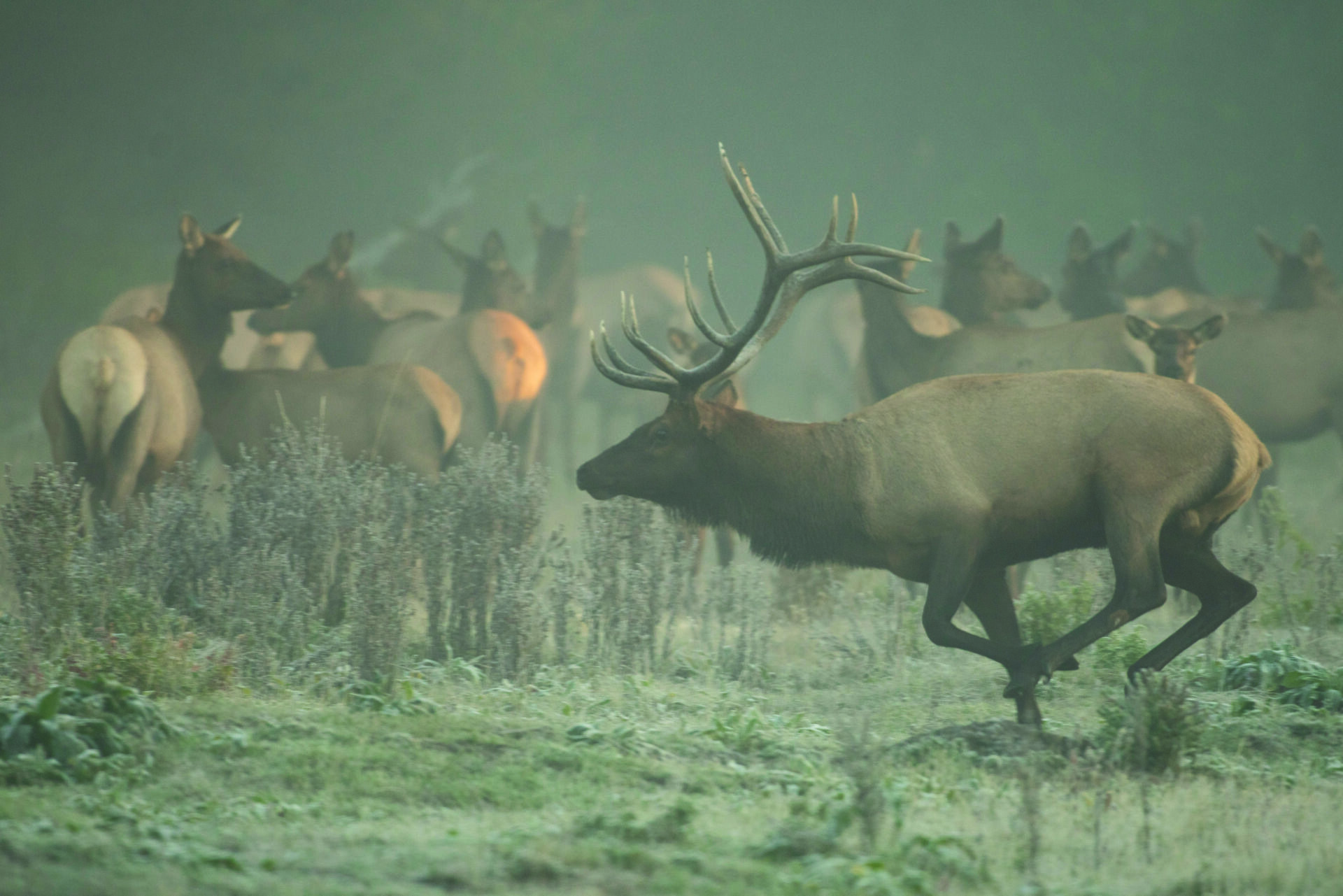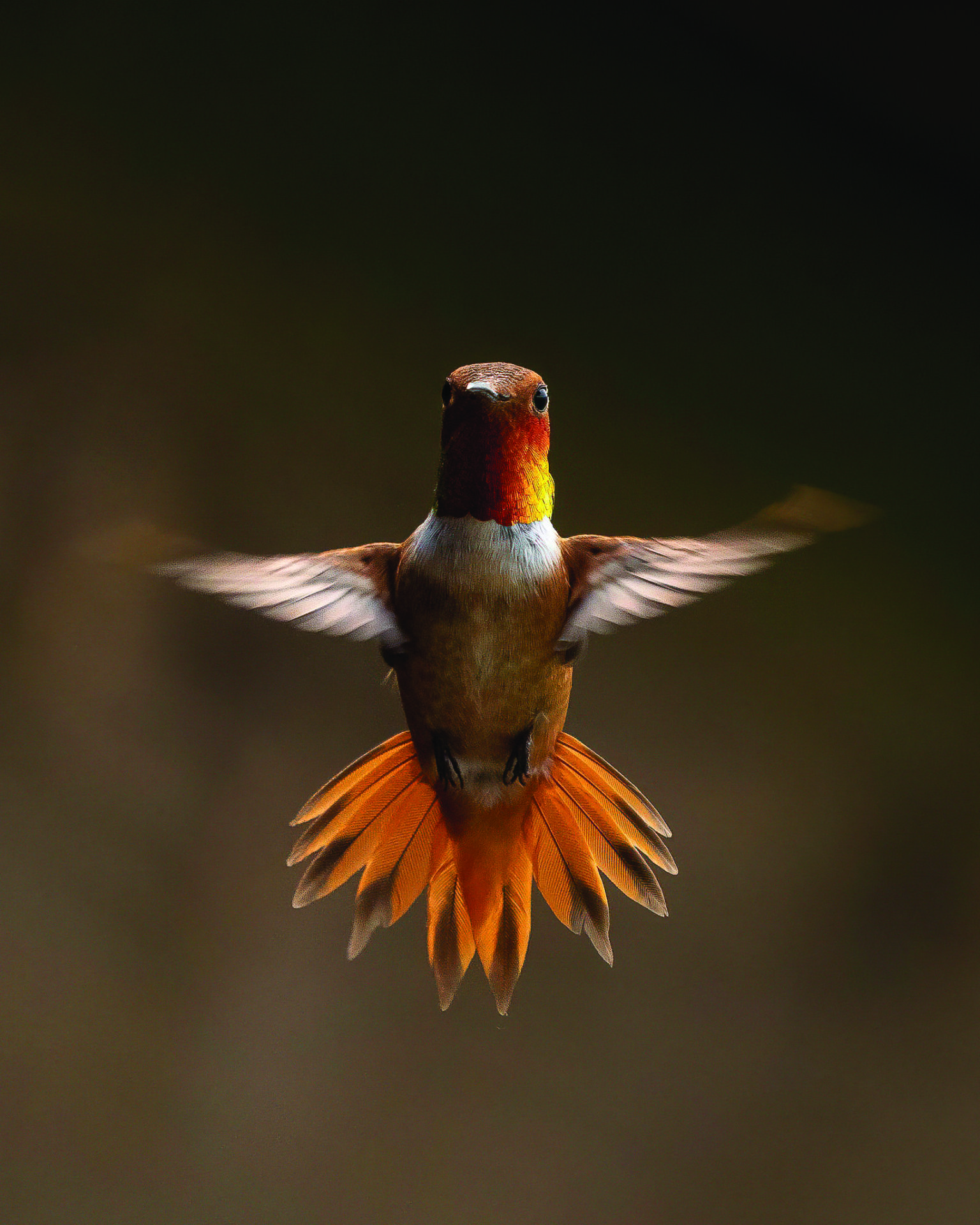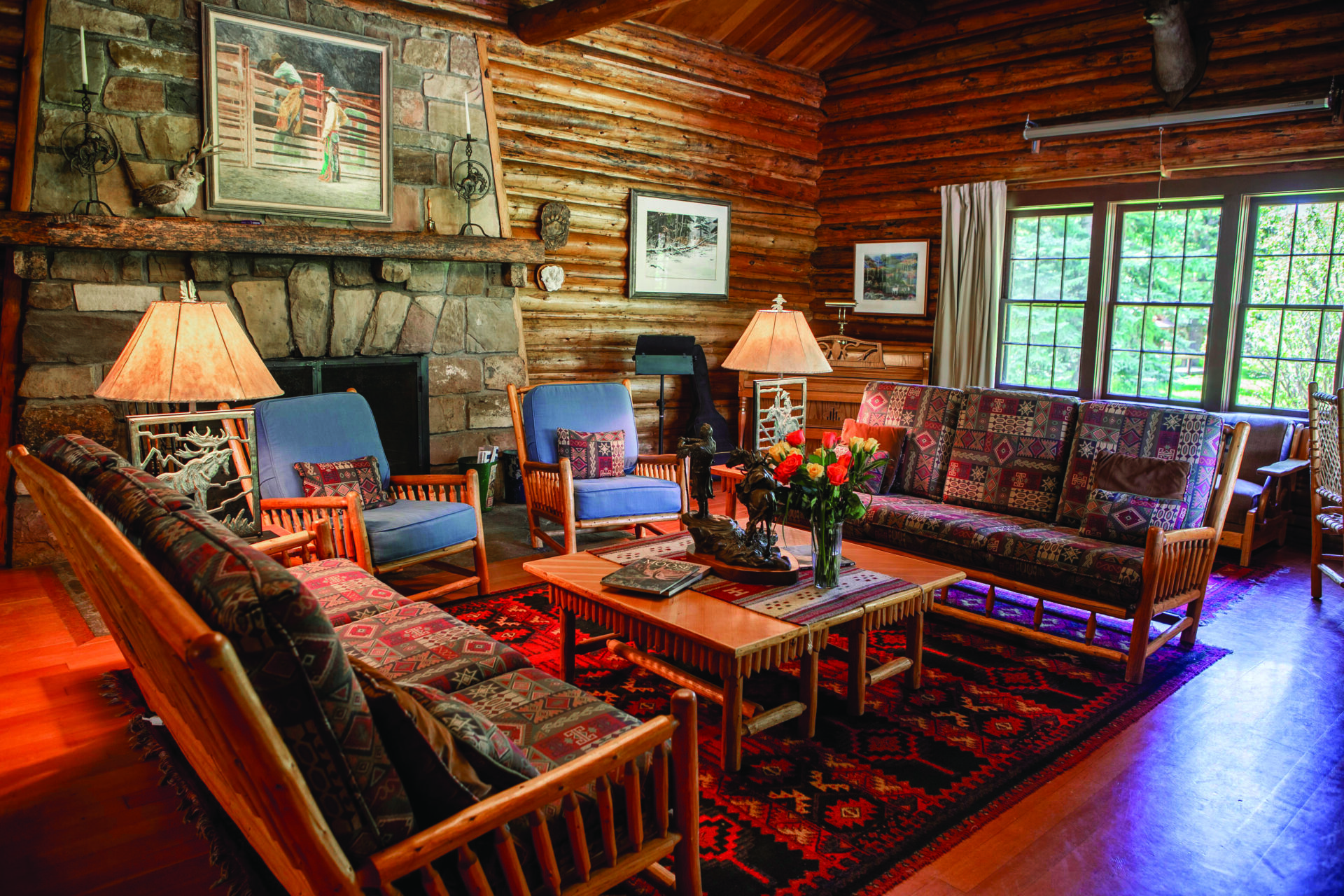Read The
Current Issue
The Land is Alive
Having grown up on the R Lazy S Ranch, photographer and archeologist Matt Stirn knows the many aspects of its personality.
// Text and photography by Matt Stirn
I grew up on the R Lazy S Ranch a mile north of Teton Village. Nestled against Grand Teton National Park to the north, the Snake River to the east, and the Tetons to the west, our ranch is an oasis of lush aspen groves, cottonwood stands, and sagebrush flats. I often travel abroad photographing stories for magazines and working on archaeological excavations, but my home base is always the ranch, a place like no other. Strolling around it, I might see bears snuffling for hawthorn berries, large herds of elk thundering across the river, or wolves moving silently like shadows through the fog.
Growing up in a wild place where everyday animal encounters rivaled the thrill of African safaris, I developed a deep fascination with nature and the love of capturing the world around me on camera. Summers, I visit coyote families as pups learn to play, photograph fledgling owls on their first evening hunts, and watch with amusement as newborn moose take their first wobbly steps. Exploring and photographing the same landscape day after day allowed me to see the land breathe and to get a special glimpse of its personality—something I’m convinced that every place has, but which we rarely stay long enough to see.
The ranch has always been a backyard made from a dream, and it has never been just my family’s. Since our first involvement, we have had the pleasure of sharing it with others. The R Lazy S has a long and colorful history as a dude ranch, continuing the tradition of inviting over 300 guests each summer to experience the “Wild West” on horseback. This summer is the R Lazy S’s 75th year welcoming guests.
I’ve found myself reflecting on this important milestone, a milestone not just in my life but also in Jackson Hole’s dude ranching history. My great-grandparents first visited Jackson in the 1940s during the heyday of Western Americana, when people flocked to Wyoming in search of the adventurous lifestyle epitomized in the pages of The Virginian by Owen Wister, who happened to be one of the R Lazy S’s earliest owners (between 1911 and 1920). My great-grandparents’ vacations here were to dude ranches in GTNP—first to the Bearpaw Ranch; then, starting in 1948, to the R Lazy S, when then-owners, the McConaughy family, transitioned it from a private ranch to a dude ranch. Nearly a decade after my great-grandparents’ first visit to the R Lazy S, a large tract of pristine land along the Snake River came up for sale. It was to be one of the first large residential subdivisions in rural Jackson. By then, my great-grandparents had fallen in love with the valley. Without much of a plan for the land beyond preserving it, they purchased the entire tract.
Twenty years later, in 1972, the R Lazy S Ranch’s lease in GTNP was ending and the McConaughys were ready to transition away from owning it. Instead of the R Lazy S closing its doors forever, my grandparents, Howard and Cara, purchased the business and the ranch brand, and, over a single summer, moved all of the historic cabins to our family’s property. My grandparents and eventually my parents, Nancy and Kelly, continued R Lazy S’s dude ranch operations at its new location. Recognizing that the valley was rapidly changing and fearing that soon both wild spaces and the cowboy culture that Jackson was founded on would disappear, in 1981 the R Lazy S’s 325 acres became the Jackson Hole Land Trust’s first private conservation easement in the valley; the easement ensured the ranch would never be developed. While trying to help preserve tradition and wild spaces has become part of my family’s culture, life on the ranch is forever changing and never ceases to surprise.
